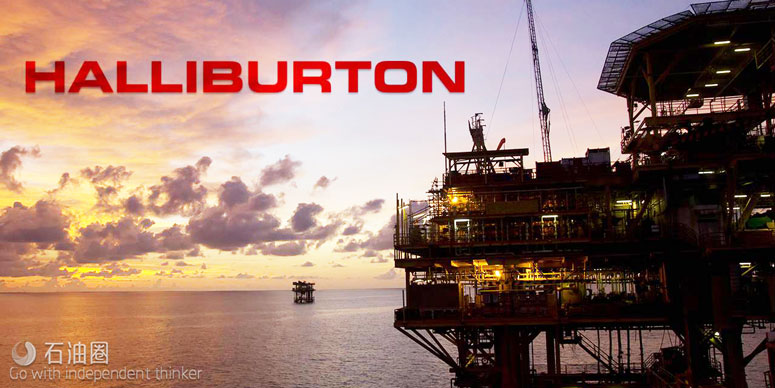Positioned to grow
TOGY talks to Heba Filobbos, area manager of the Northern Gulf for Halliburton, about the company’s experience working as an international oilfield services provider in Kuwait, areas of growth and the viability and challenges of the government’s 2020 production goals. Halliburton is a multinational oilfield services provider with an office in Kuwait that also represents Qatar and Turkey.
What are the main growth segments for Halliburton and will the company see shifts in the performance of these segments?
With Kuwait’s planned investments in downstream projects and early production facilities, we foresee growth in the downstream segment and associated product service lines.
We also anticipate a shift towards integrated project management – this trend is already underway and we expect it to continue. Integrated projects offer customers a mechanism to deliver complex project solutions while reducing uncertainty through a reliable, single point of contact.
How has digital oilfield technology evolved in Kuwait since its inception? What are the lessons learned and other possible fields for its future application?
Although oilfield workflow automation processes have been implemented in the oil and gas industry for more than a decade, the full impact and value of these technologies has yet to be realised.
In the quest to do more with less, reduce non-productive time and increase operational efficiency, Kuwait decided to implement pilot projects to evaluate different aspects of intelligent digital oilfield (iDOF) concepts.
Three pilot projects started at the end of 2009 and beginning in 2010. One of those pilot projects was the Kuwait Integrated Digital Oil Field in the Sabriyah field (KwIDF Sabriyah) which focused on the Mauddud reservoir. This area was chosen because it has unique characteristics and challenges and is a field where significant production growth is expected
Through the pilot, Halliburton successfully achieved integrated operations for measurement, modelling, and control of oilfield assets where informed decisions are made effectively in a multi-disciplinary, collaborative work environment. The availability of accurate real-time data aided in the pilot’s success.
Following the success of the pilot in Sabriyah, increased growth in the KwIDF concept was likely. Because the number of wells in the original pilot project covered only about 10% of the wells in that field, the project had to scale up to extend the value of the solution to the whole field and possibly others.
In collaboration with Kuwait, Halliburton continued to develop and refine business processes and workflows for the new way of doing business in the iDOF environment. The KwIDF project started with 49 wells and we thoroughly assessed these wells’ performance.
As a result of the pilots’ success, Halliburton will be carrying out the KwIDF Expansion Project in Sabriyah. KwIDF Expansion is the new generation in workflow automation and one of the most strategically important of Kuwait’s initiatives in terms of positioning the company to better manage its producing assets towards achieving its long-term strategy.
How has oilfield services technology developed to optimise extraction from Kuwait’s assets? What are some of the major subsurface challenges?
There are several technologies specifically used to optimise extraction in Kuwait and address some of the major subsurface challenges.
As part of Kuwait’s mature field strategy, there has been a focus on improving maximum oil recovery. One such field seeing an increased focus is the Bahrah field, located in the Mauddud formation. It is considered one of Kuwait’s most technically challenging fields.
Historically, vertical wells have been stimulated with acid fracturing with long-term hydrocarbons production supported by electric submersible pump (ESP) artificial lift. However, Halliburton experts recognised that this was not the most efficient way to complete wells in this field.
Halliburton’s commitment to delivering the lowest cost per boe through surface efficiency, custom chemistry, and subsurface insight enabled Kuwait to achieve its goal of maximising production while lowering cost through the deployment of multistage fracturing. Such treatments on Bahrah provided Kuwait with a game-changing field development strategy for future wells.
Another example is the use of intelligent completion and multilateral technology for cost effective field management solutions. Halliburton completed Kuwait’s first multilateral intelligent completion. Drilling several laterals from a single wellbore provided the ability to monitor and regulate production inflow by controlling water coning and premature water breakthrough. This delivered an economic advantage to our customer and resulted in an optimised and cost-effective field management solution.
Another technology is KwIDF, which automated workflows to monitor, diagnose, optimise, and perform multi-scenario forecasts of water flooding in low-permeability carbonate reservoirs.
Finally, Halliburton’s Autonomous Inflow Control Device, or AICD, addresses one of Kuwait’s key challenges of high water cuts and early water breakthrough. AICD helped improve recovery by reducing water cut from the high water saturation zones in the Burgan field, thereby increasing the overall oil recovery.
What are the viability and challenges of Kuwait’s ambitious 2020 production goals?
Kuwait has a priority of increasing production capacity to 4 million bopd to help it reach new markets and remain one of the world’s top oil producers. By adding more rigs, increasing EOR, hydraulic fracturing and heavy oil [production], as well as growing its plans for offshore expansion, Kuwait is taking aggressive steps to achieve this goal.
One of the challenges towards achieving this goal will be the surface facilities footprint and capacity in the country. However, we’ve seen Kuwait continue to invest in this area with early production facility projects.
How does working in Kuwait as an international services provider compare with other regional markets where Halliburton operates?
Working internationally and overseeing multiple countries and regions for the past 16 years has allowed me to objectively assess different markets and operating practices. From our experience in Kuwait, I see many opportunities for service providers to collaborate with customers and help them unlock their reservoirs’ full potential.
The competitive environment and landscape in Kuwait is very mature. This has been driven by Kuwait Petroleum Corporation (KPC) and its subsidiaries’ transparency in communicating expectations, contract award practices and sharing their future plans.
KPC and its subsidiaries understand the importance of maintaining a competitive landscape and have created a mechanism to govern and regulate market share, a practice that is not common in other parts of the world.
All of this, coupled with a customer that values the importance of strong service quality, execution performance and true business partnership, is certainly a catalyst for leading service providers such as Halliburton to strive, invest and grow in Kuwait.
It is KPC’s strategy to create sustained competitive trading relationships through awarding long-term contracts. This offers stability to service providers and encourages investment and growth in country. However, the challenge is that if a service provider does not succeed in tendering rounds, it is removed from the market segment being tendered and for the duration of the contract.
With that said, KPC’s openness to innovation and their understanding of the risk-value model has always been a potential entry point to the market.
So in essence, the Kuwaiti oil and gas operating practices create the environment for unsolicited innovation pre and post-award, develop real incentives for excellence, offer clarity on outcomes and allow for managing risks jointly. Realising these strategies has driven increased value delivery at a significantly lower cost base for KPC.
What is the importance of Kuwait in Halliburton’s global portfolio?
Kuwait remains an important strategic area for Halliburton because it is one of the top oil producers in the world with among the biggest oil reserves. It also has significant growth potential and an aggressive strategy to deliver on its growth goals. Finally, having a key position in Kuwait strengths Halliburton’s overall position in the Eastern hemisphere.


 石油圈
石油圈
